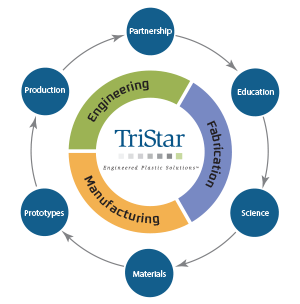Previous blog addressed importance of crystallinity control on PTFE as it relates to porosity, changes in physical strength and dielectric values. More TriStar testing has shown better detail on the effects of processing and crystallinity. Specific gravity is the primary gage of crystalline or amorphous stages of polymers.
In the case of PTFE the range is generally between 2.1 and 2.3 for unfilled resin. Testing showed that at 2.1 SpG the crystallinity of the molded product was approximately 38%. At 2.13 it was 47%, 2.15- 53%, 2.17 - 60%, 2.2 - 70%. Remember, the higher the crystallinity the lower the flex life, higher compressive stress, lower recovery, more permeability and lower wear life.
Another part of the equation has to do with microvoids as it relates to crystallinity. Microvoids are generally a result of poor attention to preforming conditions and to a lesser extent the sintering process.
Microvoids, or porosity, have a direct bearing on crystallinity. As an example, a low microvoid material at 2.13 SpG would be 47% crystalline. However, if processing problems occur and void content grows you could see a substantial increase in crystallinity. At a 1% microvoid level the 2.13 sample at 47% crystallinity would increase to 53%.
Doesn't sound like much but could have a great influence on the properties and wear of the material. Additionally, at 1% void content the dielectric strength of the PTFE would drop from it's normal 500 v/mil to 320 v/mil. This is significant when considering PTFE as a dielectric insulator.
For more information on the importance of quality in PTFE, reach out to our engineers.








